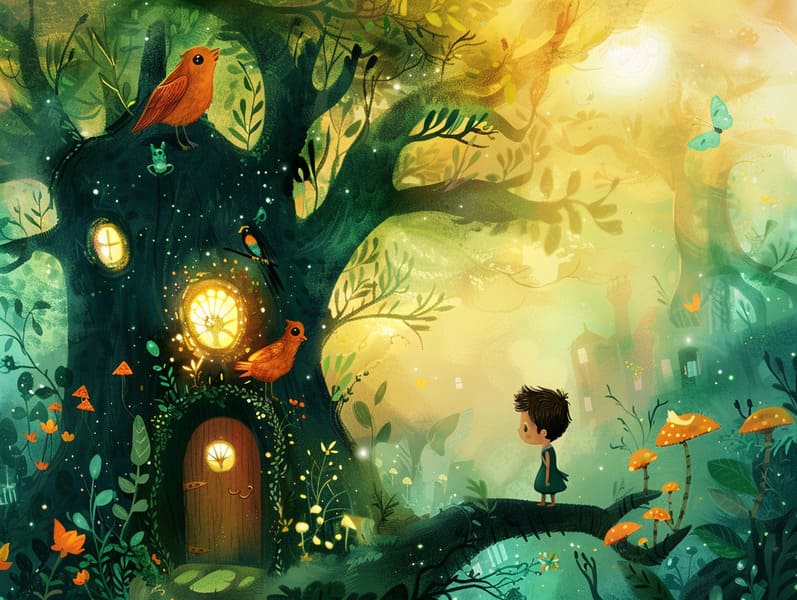The Origins of Popular Fairy Tales and the Unwavering Beauty.
The Origins of Popular Fairy Tales and the Unwavering Beauty.
Blog Article

Ancient fairy tales have old origins. These stories have been shared from one generation to the next long before they were ever inscribed. They were born from a variety of cultures, including Indigenous traditions. They were initially narrated among elders, often carrying themes and messages pertaining to the societal norms and beliefs of the time.
The famous Grimm duo, Jacob and Wilhelm Grimm, were among the first to compile and release many of these beloved stories. Their volume, "Grimm's Folk Tales," included classics like "The Story of Cinderella," "The Bread Crumb Trail," and "Snow-White and Rose-Red," which have since become cornerstones in the world of timeless fairy tales. Similarly, the Danish author's charming tales, such as "The Little Mermaid," and "The Story of the Ugly Duckling," have gained the love worldwide, solidifying their place in the pantheon of beloved fairy tales.
Despite their age, fairy tales remain as applicable as ever, especially as kids' bedtime tales. These enchanting tales are now available in multiple formats, including artistically illustrated books, fantastical animations, and web-based fairy tales.
Their enduring popularity can be traced to several fascinating points:
Valuable Lessons: Timeless fairy tales often illustrate important moral lessons. Fairy tales like "The Boy Who Cried Wolf" teach the benefit of sincerity, while "The Race of the Tortoise and the Hare" show the qualities of determination and humbleness. These narratives offer kids clear distinctions between ethical and unethical, shaping their moral compass in a subtle yet important way.
Sympathy and Perception: Fairy tales frequently depict figures facing challenges and struggles, motivating kids to empathize with their struggles and rally behind their triumphs. For instance, "Beauty's Beast" teaches us the merit of seeing inner beauty to comprehend the true being of a person, encouraging tenderness and comprehension.
Cultural Knowledge: Many fairy tales are rooted in the cultural contexts from which they sprang. Immersing in these tales can provide delightful insights into different heritages, nurturing a sense of cultural appreciation and appreciation.
Imagination and Creativity: The imaginative elements in old fairy tales—mythical entities—revitalize children’s creative dreams. These fairy tales transport readers to fantasy realms, enlivening fantastical thinking and a sense of amazement that stays a lifetime.
Classic fairy tales are not only fantastical but also educational. They act as charming tools in building various intellectual and emotional capacities in little ones. When classic fairy tales are narrated, they advance communication skills by teaching new terms and meanings and sophisticated sentence structures. This practice also improves listening skills and concentration, as young readers stay focused, anticipating to see what happens next.
Furthermore, contemplating the themes and characters of old fairy tales can develop analytical skills and cognitive skills. Little ones are guided to detect patterns, forecast, and know cause and effect. These discussions also facilitate young readers utter their thoughts and feelings, boosting their emotional intelligence.
In today’s digital age, the abundance of internet fairy tales has made these narratives more within reach than ever. Web-based platforms and mobile apps extend broad selections of traditional fairy tales that can be read or listened via anytime, anywhere. Fairy tales voiced are particularly liked, providing an captivating way for little ones to appreciate these bewitching tales. Read-aloud books and read-out-loud stories guide characters and settings to life, often enhanced by magical melodies and songs that boost the narrative experience.
The timeless allure of timeless fairy tales lies in their ability to change to current times while keeping hold of their core messages. Contemporary takes of these fairy tales often bring in more different figures and modern settings, making them pertinent to today’s audience. However, the essential messages of valour, humanity, and lawfulness remain unchanged, continuing to move audiences of all ages.
Ancient fairy tales also offer a sense of serenity and knownness. They offer a well-ordered narrative with a obvious beginning, middle, and end, often closing with the culmination of conflicts and the triumph of morality over immorality. This predictability can be soothing for young readers, granting a sense of sturdiness in an unpredictable world.
Traditional fairy tales continue to mesmerize and train new generations, maintaining their appeal and significance in modern society. As kids' bedtime tales, they impart a perfect blend of captivation and insight, backing moral values, empathy, and creativity. The abundance of free fairy tales online and the popularity of fairy tales recited promise that these old tales remain available to new generations.
By keeping and releasing these fairy tales, we continue to value the rich tapestry of lore and cultural heritage. Whether you are experiencing a beautifully illustrated book, experiencing a more info virtual library, or playing an voice book, the captivation of Grimm's fairy tales is always within reach. These stories show us of the invariable influence of narratives and its ability to gather us across centuries and lands.
Even if you are seeing a beautifully illustrated book, perusing a web collection, or hearing an audiobook, the spell of old fairy tales is always within reach.
These stories point out of the timeless nature of tales and its ability to bond us across eras and regions, establishing a link that fascinates and enlightens alike.